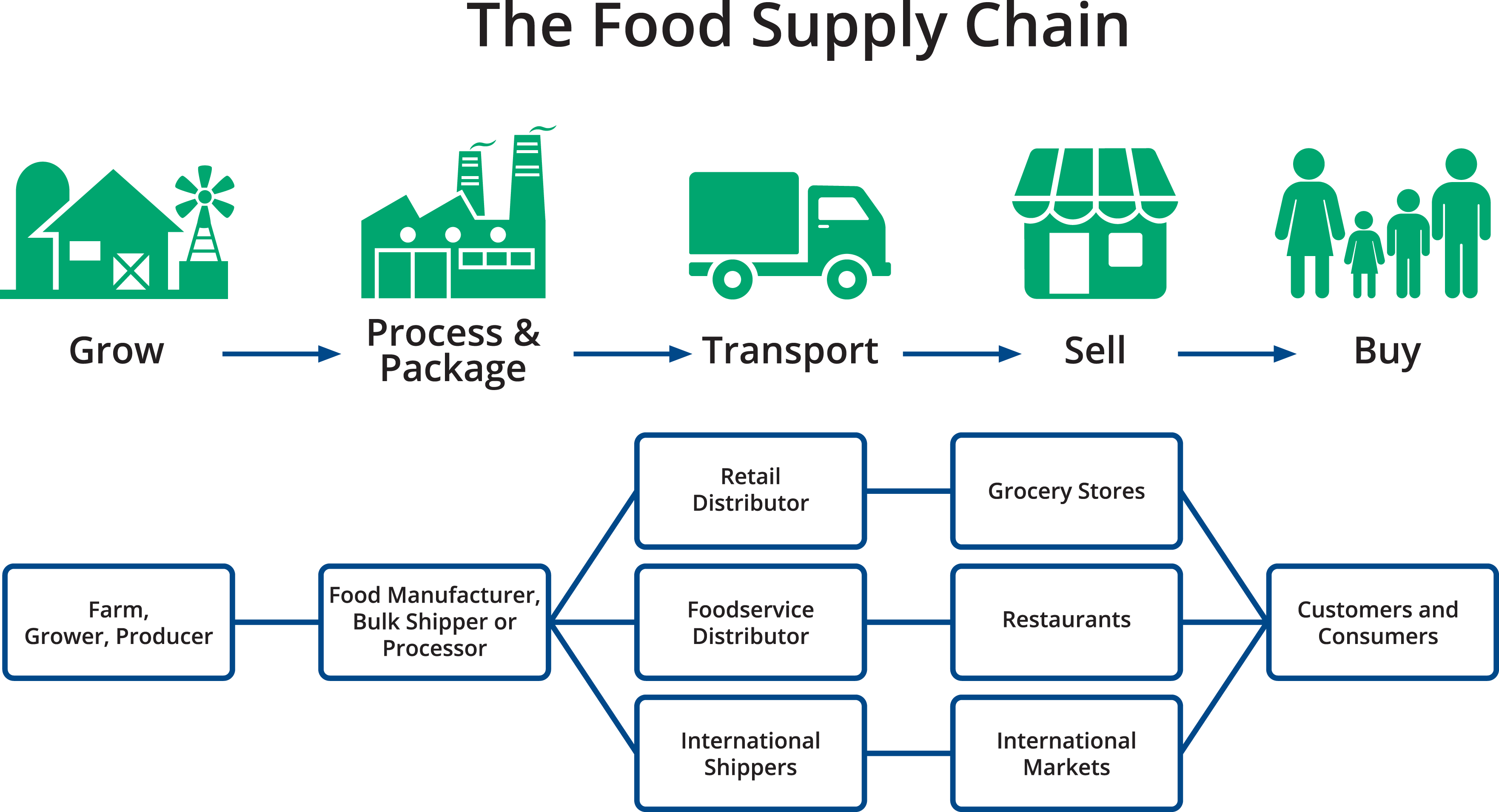Career Trek: From Farm-to-Fork
Explore the farm-to-fork process of food through the lens of careers. Students will make a career web to see the variety of careers and skill sets necessary to our food system. They will check their understanding by playing Career Trek—a board game that requires students to identify careers in agriculture and natural resources.

Background
Lesson Activities
Recommended Companion Resources
Credits
Author
Andrea Gardner | National Center for Agricultural Literacy (NCAL)
Standards
Indiana Content Area Standards
-
English Language Arts.Grade 6.RN.1
Read a variety of nonfiction within a range of complexity appropriate for grades 6-8. By the end of grade 6, students interact with texts proficiently and independently at the low end of the range and with scaffolding as needed at the high end of the range.
- Key Ideas and Textual Support.6.RN.2.1: Analyze what a text says explicitly as well as draw inferences from the text through citing textual evidence.
-
English Language Arts.Grade 6.SL.1
Listen actively and adjust the use of spoken language (e.g., conventions, style, vocabulary) to communicate effectively with a variety of audiences and for different purposes.
- Comprehension.6.SL.3.1: Interpret information presented in diverse media and formats (e.g., visually, quantitatively, orally) and explain how it contributes to a topic, text, or issue under study.
- Discussion and Collaboration.6.SL.2.1: Engage effectively in a range of collaborative discussions (e.g.,one-on-one, in groups, and teacher-led) on grade- appropriate topics, texts, and issues, building on others ideas and expressing personal ideas clearly.
-
English Language Arts.Grade 7.RN.1
Read a variety of nonfiction within a range of complexity appropriate for grades 6-8. By the end of grade 7, students interact with texts proficiently and independently at the middle of the range and with scaffolding as needed for texts at the high end of the range.
- Key Ideas and Textual Support.7.RN.2.1: Analyze what a text says explicitly as well as draw inferences from the text through citing several pieces of textual evidence.
-
English Language Arts.Grade 7.SL.1
Listen actively and adjust the use of spoken language (e.g., conventions, style, vocabulary) to communicate effectively with a variety of audiences and for different purposes.
- Comprehension.7.SL.3.1: Analyze the main ideas and supporting details presented in diverse media and formats (e.g., visually, quantitatively, orally) and explain how the ideas clarify a topic, text, or issue under study.
- Discussion and Collaboration.7.SL.2.1: Engage effectively in a range of collaborative discussions (e.g., one-on-one, in groups, and teacher-led) on grade- appropriate topics, texts, and issues, building on others ideas and expressing personal ideas clearly.
-
English Language Arts.Grade 8.RN.1
Read a variety of nonfiction within a range of complexity appropriate for grades 6-8. By the end of grade 8, students interact with texts proficiently and independently.
- Key Ideas and Textual Support.8.RN.2.1: Analyze what a text says explicitly as well as draw inferences from the text through strong and supportive textual evidence.
-
English Language Arts.Grade 8.SL.1
Listen actively and adjust the use of spoken language (e.g., conventions, style, vocabulary) to communicate effectively with a variety of audiences and for different purposes.
- Comprehension.8.SL.3.1: Analyze the purpose of information presented in diverse media and formats (e.g., visually, quantitatively, orally) and evaluate the motives (e.g., social, commercial, political) behind its presentation.
- Discussion and Collaboration.8.SL.2.1: Engage effectively in a range of collaborative discussions (e.g., one-on-one, in groups, and teacher-led) on grade- appropriate topics, texts, and issues, building on others ideas and expressing personal ideas clearly.

